When I first decided to improve my eating habits, I felt overwhelmed. The idea of a balanced diet seemed complex and unattainable. But over time, I discovered that it’s about making small, consistent changes that add up to big results.
My journey began with understanding the basics of nutrition. I learned that filling my plate with a variety of fruits and vegetables is essential. These foods not only provide vital nutrients but also keep meals interesting and flavorful.
I also focused on incorporating whole grains and lean proteins into my meals. Avoiding processed food became a priority, as I realized how much better I felt when I ate fresh, whole ingredients. It’s not about perfection but progress.
This guide is my way of showing you that a balanced diet is both achievable and sustainable. Let’s explore how you can make simple, impactful changes to your eating habits.
Key Takeaways
- Incorporate a variety of fruits and vegetables into your meals.
- Choose whole grains and lean proteins for better nutrition.
- Limit processed foods to improve overall health.
- Focus on fresh, whole ingredients for essential nutrients.
- Small, consistent changes lead to long-term success.
My Personal Journey to Better Nutrition
I never realized how much my eating habits affected my overall health until I started paying attention. Growing up, I didn’t think much about what I ate. It was only when I began feeling sluggish and unmotivated that I questioned my choices.
One day, I stumbled upon research linking poor nutrition to chronic disease. That was my wake-up call. I learned that what I put on my plate could either increase my risk of illness or protect my body. This realization sparked my journey to better eating habits.
🌿 Discover the Benefits of Moringa!

Discovering the Importance of Diet
At first, I didn’t know where to start. I relied on processed foods and sugary snacks, thinking they were convenient. But I soon discovered that these choices were harming my health. I decided to educate myself about whole, nutrient-rich foods and their benefits.
Gradually, I began making small changes. I swapped processed meat for leaner options and added more vegetables to my meals. Over time, I noticed a significant improvement in my energy levels and overall well-being.
My Challenges and Successes
Changing my eating habits wasn’t easy. I faced challenges like cravings and the temptation to revert to old habits. But I stayed committed by focusing on my long-term health goals.
One of my biggest successes was reducing my risk of chronic disease. By prioritizing whole foods and limiting processed items, I felt stronger and more vibrant. My journey taught me that small, consistent changes can lead to lasting improvements in nutrition and health.
Understanding a Balanced Diet for a Healthy Life
I discovered that a balanced diet is more than just counting calories. It’s about the quality of the foods I eat and the portions I consume. This realization helped me focus on variety and nutrient-rich choices rather than obsessing over numbers.
🚀 Start Your Health Journey Today!
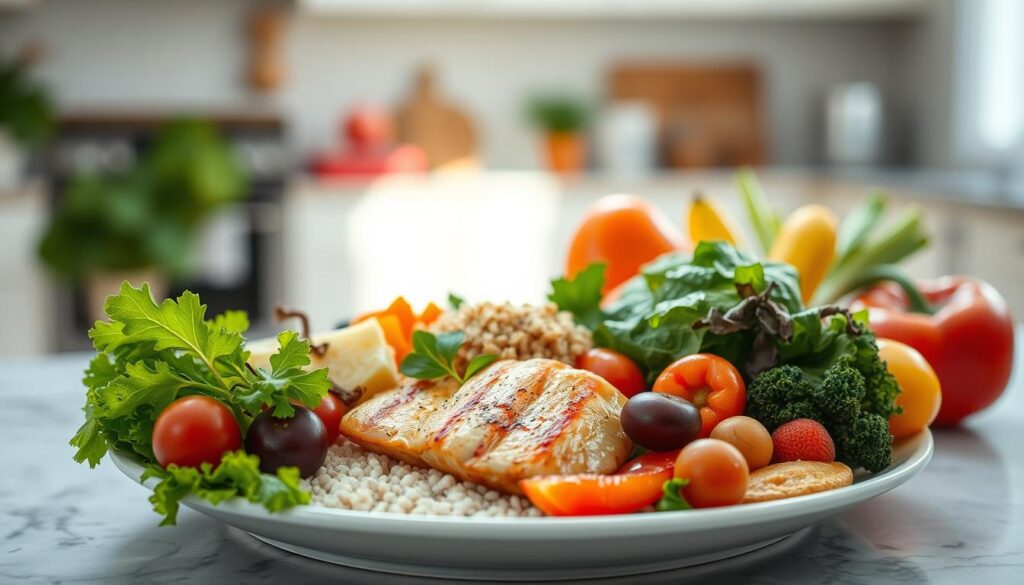
What “Balanced” Really Means
A balanced diet isn’t about perfection. It’s about including a mix of foods that provide essential nutrients. I learned that filling my plate with a variety of fruits, vegetables, whole grains, and proteins is the key to maintaining energy and overall well-being.
Portion sizes also matter. Eating too much of even healthy foods can lead to excess calorie intake. I started paying attention to serving sizes, which helped me manage my energy levels better.
Key Nutritional Components
Whole grains play a vital role in my meals. They provide steady energy and keep me full longer. I replaced refined grains with options like quinoa, brown rice, and oats, which made a noticeable difference in how I felt throughout the day.
Managing calorie intake is important, but not all fats are bad. I incorporated healthy fats from sources like olive oil and avocados. These fats support brain function and keep my heart healthy.
Expert guidelines suggest balancing proteins, carbohydrates, and fats. I now aim for a mix of lean proteins, complex carbs, and healthy fats in every meal. This approach has transformed how I plan my meals and improved my overall health.
The Role of Nutrients and Whole Foods in My Diet
I’ve always believed that what I eat directly impacts how I feel. Over time, I’ve learned that focusing on nutrient-rich foods is the foundation of my well-being. By incorporating a colorful mix of fruits, vegetables, and whole grains, I’ve noticed a significant boost in my energy and overall health.
🌟 Boost Your Wellness with Moringa!

Fruits, Vegetables, and Whole Grains
Every meal is an opportunity to nurture my body. I fill half my plate with a variety of fruits and vegetables, as recommended by Harvard’s Healthy Eating Plate. This approach not only supports my heart but also helps prevent cardiovascular disease.
Whole grains like quinoa, brown rice, and oats are staples in my diet. They provide steady energy and keep me full longer. By choosing these over refined grains, I’ve improved my digestion and overall health.
Proteins and Healthy Fats
Balancing proteins and fats is crucial for my nutritional needs. I opt for lean proteins like chicken, fish, and legumes, which support muscle health and keep me satisfied. Healthy fats from sources like olive oil and avocados are essential for brain function and heart health.
Portion control plays a big role in my meals. I ensure that each food group is well-represented, which helps me maintain a balanced intake of nutrients. This method has made my meals more enjoyable and beneficial for my body.
Building a Meal Plan: Portion Control and Variety
Creating a meal plan transformed how I approach food every day. It helped me focus on portion control and variety, ensuring my body gets the nutrients it needs. By following simple methods, I’ve made eating well both manageable and enjoyable.
⏳ Exclusive Offer Just for You!
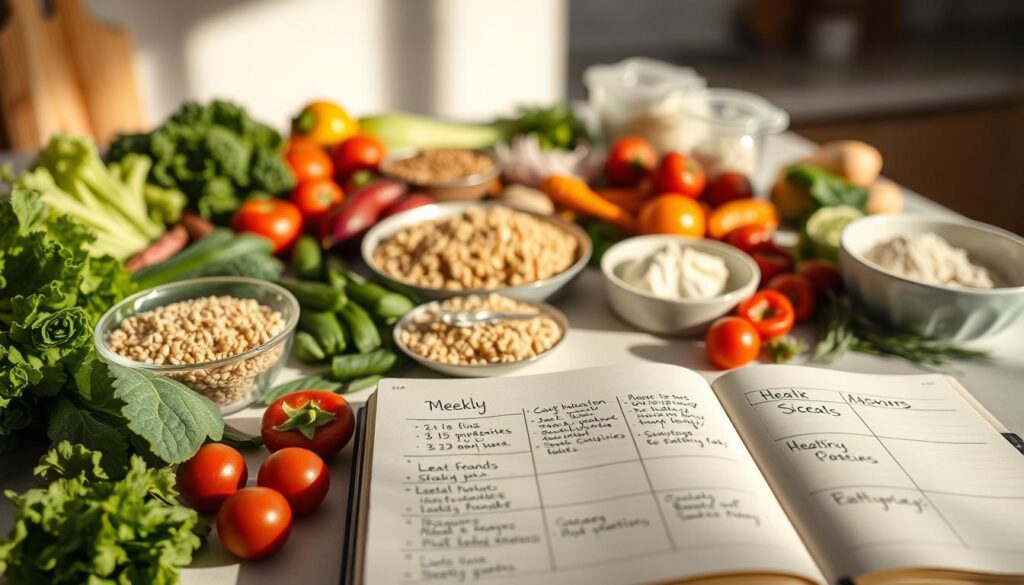
Using the Plate Method
I use the plate method to balance my meals. Half of my plate is filled with fruits and vegetables, a quarter with whole grains like rice, and the remaining quarter with proteins. This approach ensures I get a mix of nutrients without overeating.
Portion control has made a big difference in how I feel each day. I’ve learned that even healthy foods can lead to excess calories if portions aren’t managed. By sticking to this method, I’ve noticed improved energy levels and better digestion.
Strategies for Meal Prep
Meal prep has been a game-changer for me. I dedicate a few hours each week to prepare meals in advance. This includes a mix of dairy alternatives and bean-based proteins for variety. Having ready-to-eat meals reduces the temptation to grab processed foods.
Here’s a simple guide to portion sizes I follow:
| Food | Portion Size |
|---|---|
| Cooked rice | 1/2 cup (100g) |
| Vegetables | 1–2 cups (150–300g) |
| Beans | 1/2 cup (90g) |
| Dairy (milk) | 1 cup (240ml) |
Planning meals in advance has simplified my routine. I create a shopping list to stick to my budget and avoid impulse buys. This strategy has helped me maintain a consistent and nutritious eating pattern.
Embracing the Healthy Eating Plate and Expert Guidelines
Adopting Harvard’s Healthy Eating Plate was a turning point in my approach to food. It provided clear, actionable steps to ensure I was eating a variety of nutrient-rich foods in the right proportions. This method has reshaped my daily habits and helped me maintain steady energy levels throughout the year.
Insights from Harvard’s Healthy Eating Plate
One of the biggest changes I made was incorporating more whole-grain bread into my meals. It’s a great source of fiber and helps regulate blood sugar levels. I also started adding a variety of nuts to my snacks, which provide healthy fats and keep me satisfied between meals.
Harvard’s guidelines emphasize the importance of focusing on food types rather than just quantities. For example, choosing whole grains over refined ones or opting for lean proteins instead of processed meats. This shift in mindset has been transformative for me.
“The quality of your food choices matters more than the quantity.”
Expert Tips for a Healthful Diet
Experts recommend swapping butter for healthier nut oils, which support heart health. I’ve also learned to balance my meals by including a mix of proteins, carbs, and fats. This approach has helped me feel more energized and focused throughout the year.
Here’s a simple guide to portion sizes I follow based on expert advice:
| Food | Portion Size |
|---|---|
| Whole-grain bread | 1 slice (28g) |
| Mixed nuts | 1/4 cup (30g) |
| Olive oil | 1 tablespoon (15ml) |
These guidelines have made it easier for me to make sustainable choices. By focusing on quality and variety, I’ve noticed significant improvements in my overall well-being.
Customizing My Diet for Nutritional Needs and Disease Prevention
Personalizing my eating habits has been a game-changer for my overall well-being. By tailoring my meals to meet my specific nutritional needs, I’ve been able to stay energized and reduce my risk of chronic diseases. It’s all about making informed choices that align with my lifestyle and health goals.
Managing Caloric Intake and Nutrient Balance
Balancing calories with nutrient density is a cornerstone of my approach. I focus on whole, nutrient-rich foods like wheat products, which provide steady energy and essential fiber. Swapping refined grains for whole wheat has made a noticeable difference in my digestion and energy levels.
I also monitor my daily calorie intake to ensure I’m not overeating. Tools like food journals and apps help me stay on track. This strategy allows me to enjoy my meals without compromising my health goals.
Reducing Risks of Heart Disease and Diabetes
One of my top priorities is reducing the risk of chronic diseases like heart disease and diabetes. I’ve incorporated olive oil into my cooking for its heart-healthy benefits. Research shows that it can lower cholesterol and improve overall heart health.
Following expert recommendations has been crucial. For example, I limit processed foods and prioritize lean proteins and healthy fats. These small changes have had a big impact on my long-term health.
Here’s a simple guide to the foods I rely on:
- Whole wheat bread and pasta for sustained energy.
- Olive oil for cooking and dressings to support heart health.
- Lean proteins like chicken and fish to maintain muscle health.
By making these choices, I’ve created a healthy diet that works for me. It’s not about perfection but progress, and I’m proud of the steps I’ve taken to improve my well-being.
Delicious and Nutritious Food Groups I Rely On
Exploring different food groups has been a cornerstone of my nutritional journey. I’ve found that incorporating a mix of dairy, legumes, and fresh produce keeps my meals exciting and nutrient-rich. This variety ensures I meet my daily intake needs while enjoying what I eat.
Exploring Variety: From Dairy to Legumes
I rely on a broad range of food groups to stay energized and healthy. Fresh dairy alternatives like almond milk and yogurt provide essential calcium without the saturated fat found in traditional options. Legumes, such as lentils and chickpeas, are a staple in my meals, offering ample protein and fiber.
My emphasis on fruit vegetables ensures my meals are both colorful and nutritious. I aim to include at least five servings daily, as recommended by experts. This habit not only supports my overall health but also keeps my meals flavorful and satisfying.
Limiting saturated fat has been a priority. I’ve swapped butter for healthier options like olive oil and avocado. These choices help me maintain a balanced diet while supporting my heart health.
Tracking my daily intake has become a regular practice. I use apps to monitor my nutrient levels, ensuring I stay on course. This mindful approach to eating has made a significant difference in how I feel each day.
Here’s a simple guide to the food groups I depend on:
- Fresh dairy alternatives for calcium and variety.
- Legumes like lentils and chickpeas for protein and fiber.
- A mix of fruit vegetables for essential vitamins and minerals.
- Healthy fats from olive oil and avocados to support heart health.
By focusing on these food groups, I’ve created a balanced diet that works for me. It’s not about perfection but progress, and I’m proud of the steps I’ve taken to improve my well-being.
Practical Tips for Integrating a Balanced Diet Into My Daily Life
Integrating better eating habits into my daily routine didn’t happen overnight, but with practical strategies, it became second nature. I’ve learned that small, consistent changes can make a big difference. Here’s how I make it work, even on the busiest days.
Smart Grocery Shopping and Cooking Techniques
Grocery shopping is the first step toward better eating. I always start by making a list to avoid impulse buys. Reading labels is a must—I look for low sugar content and avoid processed foods. Choosing items from all food groups ensures variety and balance.
When it comes to cooking, I focus on techniques that preserve nutrients. Steaming and grilling are my go-to methods. I also limit unhealthy fats by using olive oil instead of butter. These small changes help me maintain a nutrient-rich diet without sacrificing flavor.
Staying Active to Complement My Diet
Physical activity is just as important as what I eat. I aim for at least 30 minutes of exercise most days. This not only boosts my energy but also helps reduce the risk heart disease. Even a busy person can find time for a quick walk or a home workout.
I’ve noticed that staying active keeps me motivated to make better food choices. It’s a cycle—eating well fuels my workouts, and exercising makes me crave healthier meals. This balance has been key to my overall well-being.
“Small, consistent changes in shopping, cooking, and exercise lead to long-term health benefits.”
Here’s a quick guide to my daily routine:
- Plan meals ahead to avoid last-minute unhealthy choices.
- Choose whole grains, lean protein, and fresh produce.
- Limit added sugar and processed foods.
- Stay active with simple exercises like walking or yoga.
By focusing on these practical tips, I’ve made better eating habits a seamless part of my life. It’s not about perfection but progress, and I’m proud of the steps I’ve taken to improve my health.
Conclusion
Taking small steps toward better nutrition has transformed my daily routine. By relying on trusted sources like Harvard’s Healthy Eating Plate, I’ve learned to prioritize nutrient-rich foods that fuel my energy and support my well-being. These changes have not only improved how I feel but also helped reduce my risk of heart disease.
Creating a personalized plan has been key to my success. It’s about making informed choices that fit my lifestyle and goals. I encourage you to start with small, manageable changes—like adding more vegetables or swapping processed snacks for whole foods.
Remember, progress is more important than perfection. By educating yourself and staying consistent, you can build habits that last a lifetime. Start today, and take the first step toward a healthier you.
FAQ
What does a balanced diet mean to me?
How do I ensure I’m getting enough nutrients?
What are some strategies I use for meal prep?
How do I manage my caloric intake?
What role do whole grains play in my diet?
How do I incorporate healthy fats into my meals?
What are my go-to protein sources?
How do I stay active while maintaining a healthy diet?
What are some tips for smart grocery shopping?
How do I reduce the risk of heart disease through my diet?
Did you like this article? See also:Lose Weight Fast: 30-Day Workout Plan for Weight Loss

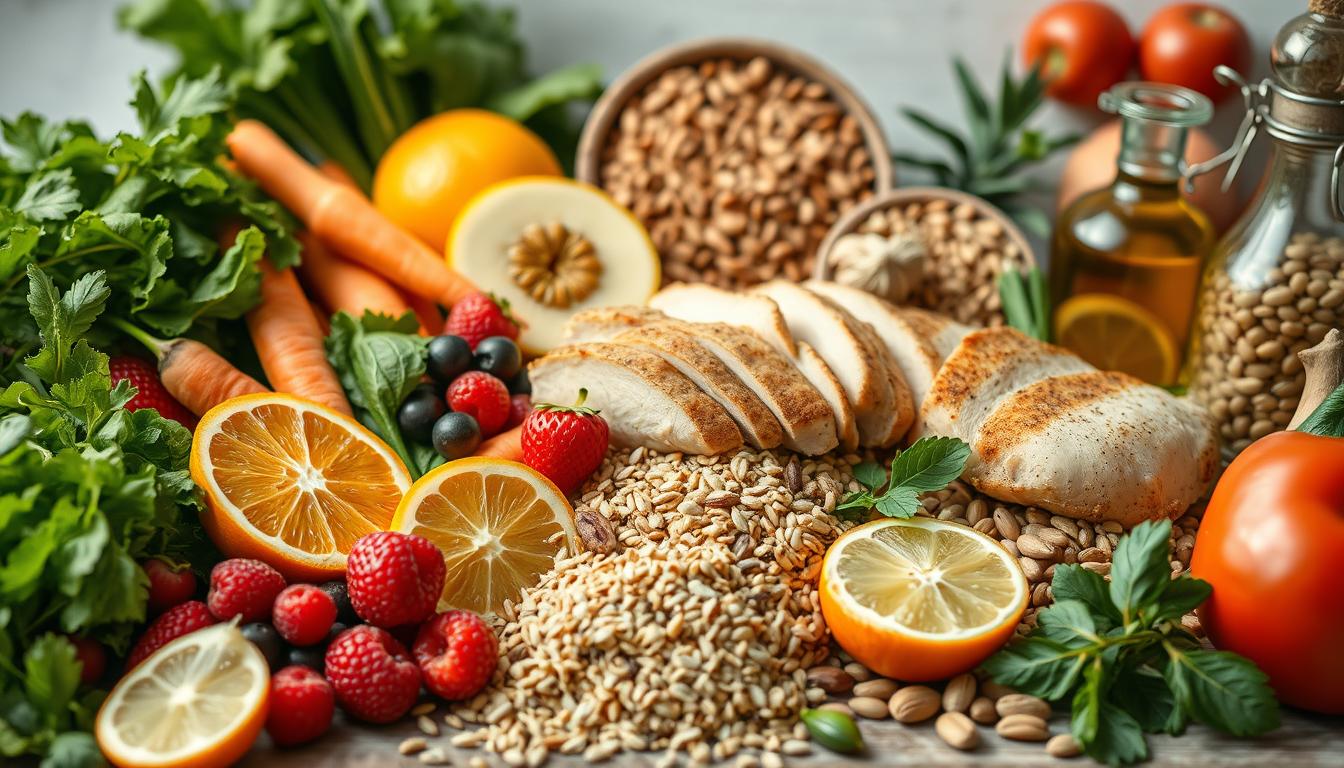
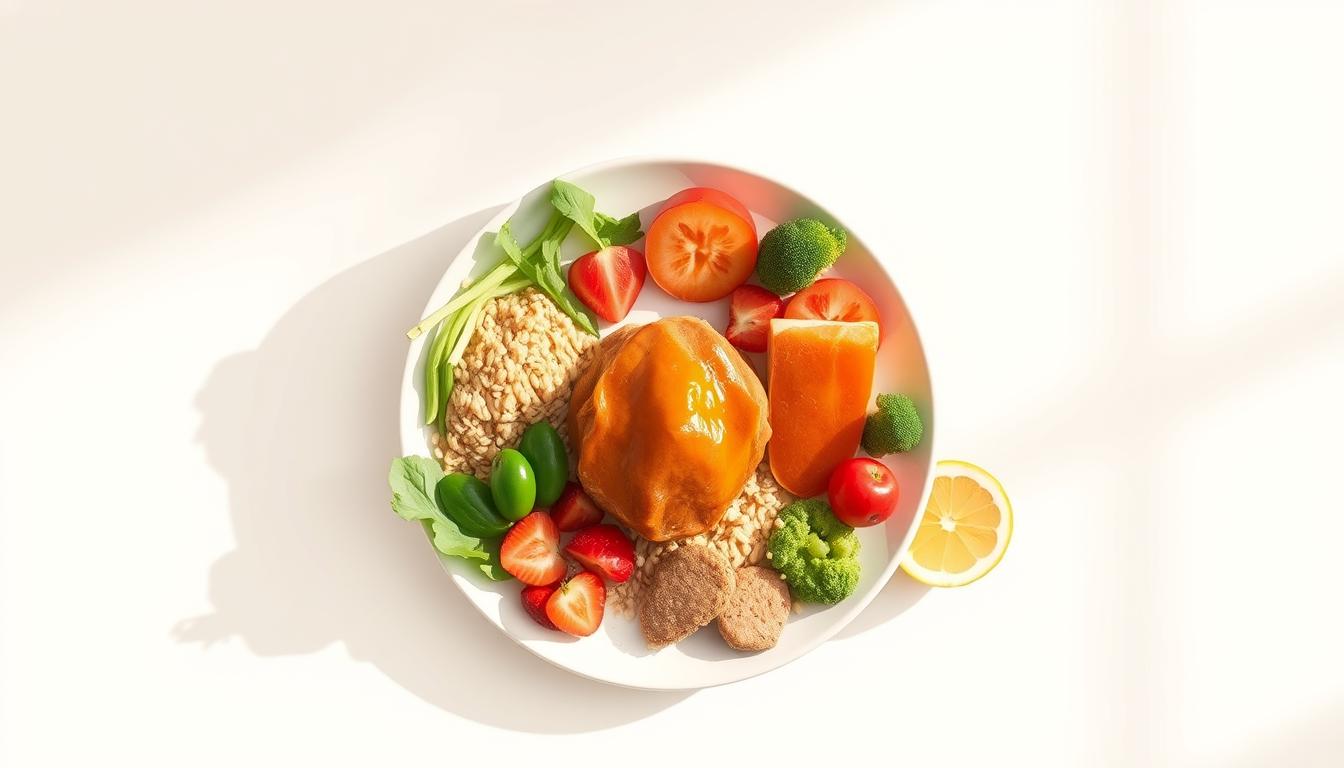
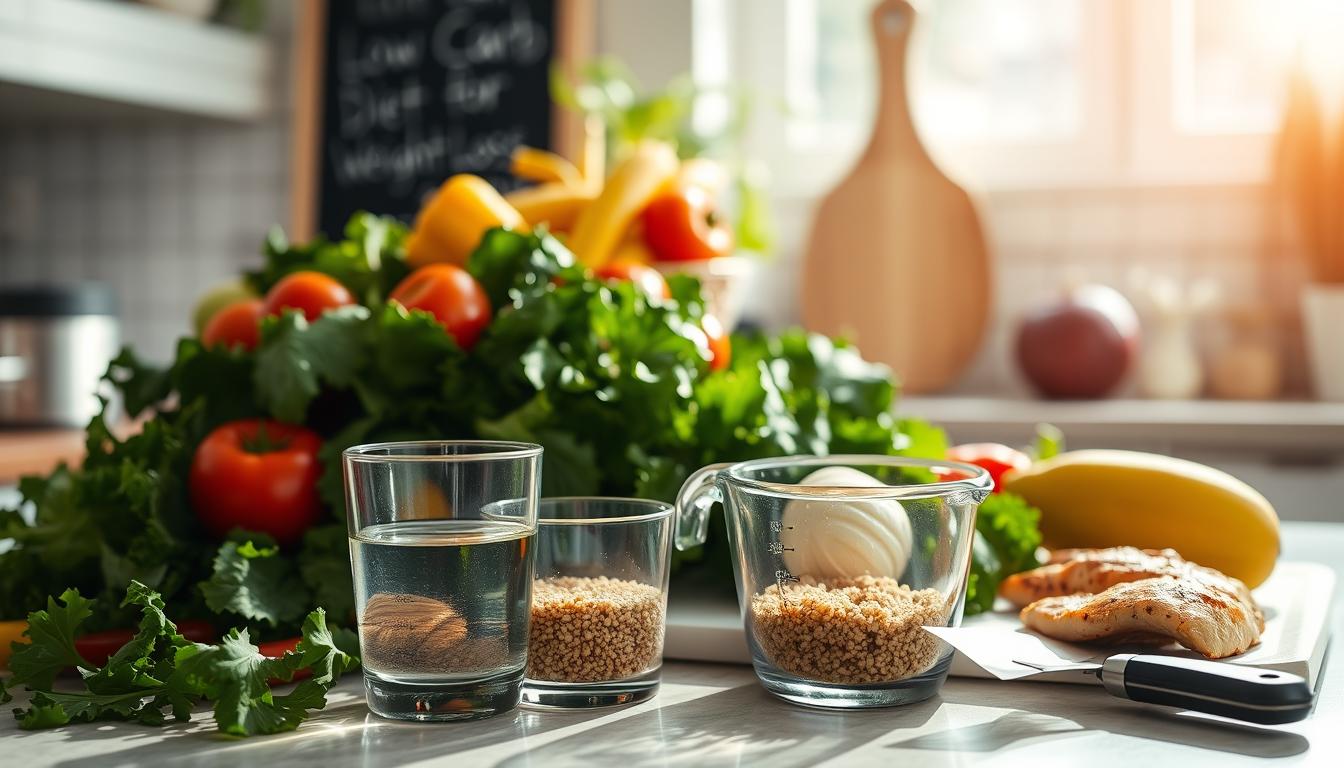




Comment on “How I Achieve a Balanced Diet for a Healthy Life”